|
|||
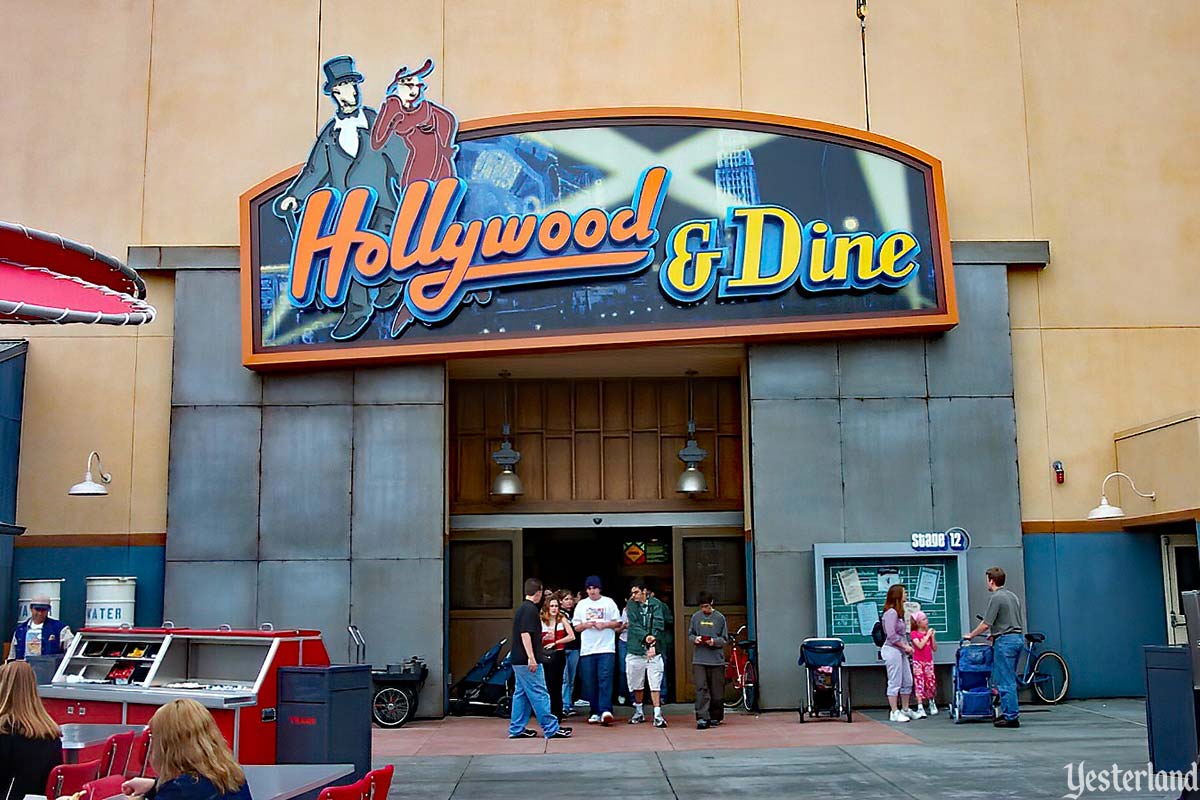
Photo by Tony “WisebearAZ” Moore, 2001 |
|||
|
Hungry? Head over to Hollywood & Dine! It’s your opportunity to dine in Hollywood Pictures Backlot Soundstage 12. The film sets will take you back to legendary eateries from the Golden Age of Hollywood. |
|||
|
|
|||
|
Choose your meal from four distinctly different counters, each based on a historic Hollywood eatery at which Hollywood stars would unwind when they weren’t in front of a movie camera. |
|||
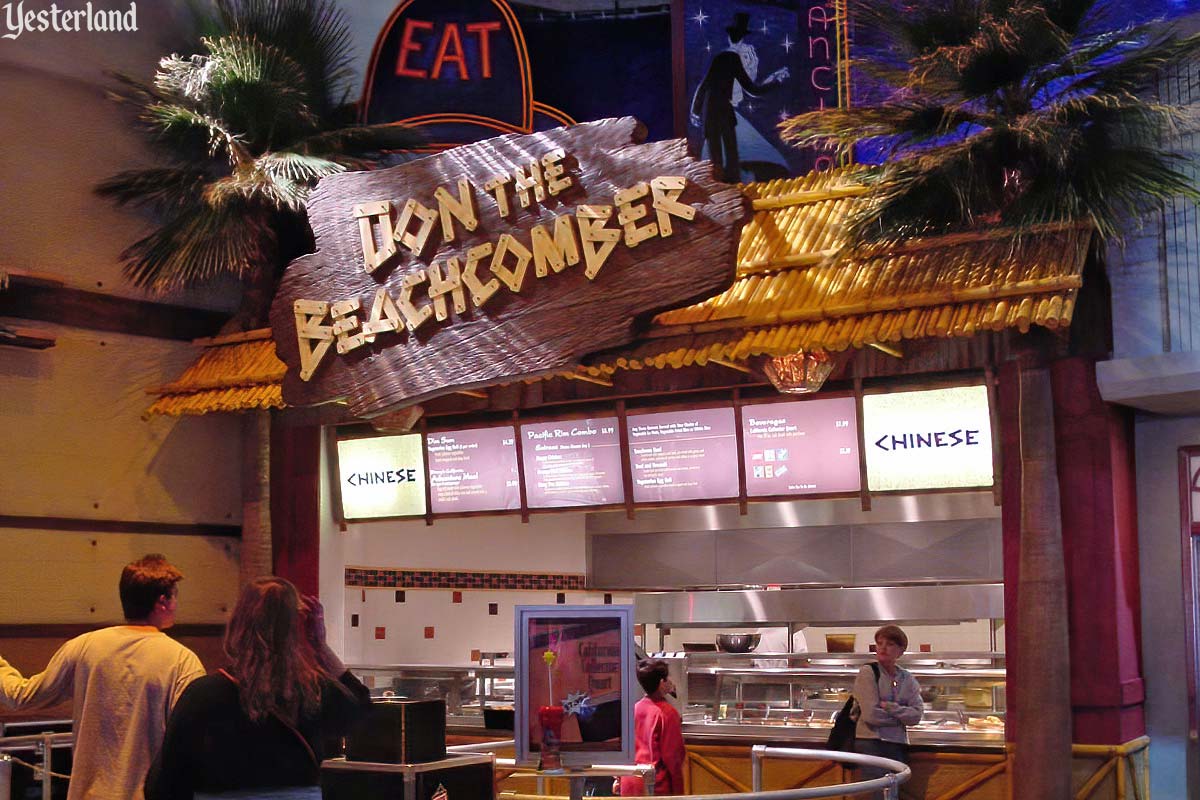
Photo by Allen Huffman, 2001 Don the Beachcomber, serving Chinese food |
|||
|
From left to right, the first of the four counters is Don the Beachcomber. Create your own Pacific Rim Combo for $8.99 by choosing two items from the menu board: caramelized chicken, orange peel chicken, kung pao chicken, Schezwan beef, beef and broccoli, and vegetarian egg roll. Not that hungry? Just order a single vegetarian egg roll for $4.29. The real Don the Beachcomber restaurant is credited with launching the Polynesian (or “tiki”) lounge fad that swept the U.S. mainland in the 1940s and 1950s, although rival Trader Vic’s also gets some of the credit. Former bootlegger Donn Beach (1907-1989), who was born Ernest Raymond Beaumont Gantt, opened a bar called Don’s Beachcomber in Hollywood in 1934. Then, in 1937, he opened his first Don the Beachcomber restaurant across the street from the bar. The Cantonese food was considered exotic at the time, but the restaurant’s real fame came from the tropical rum drinks that Don the Beachcomber introduced, such as the Zombie, Beachcomber’s Gold, Missionary’s Downfall, and Navy Grog. Don the Beachcomber and Trader Vic’s both claimed to have invented the Mai Tai, the most famous tropical drink of all. |
|||
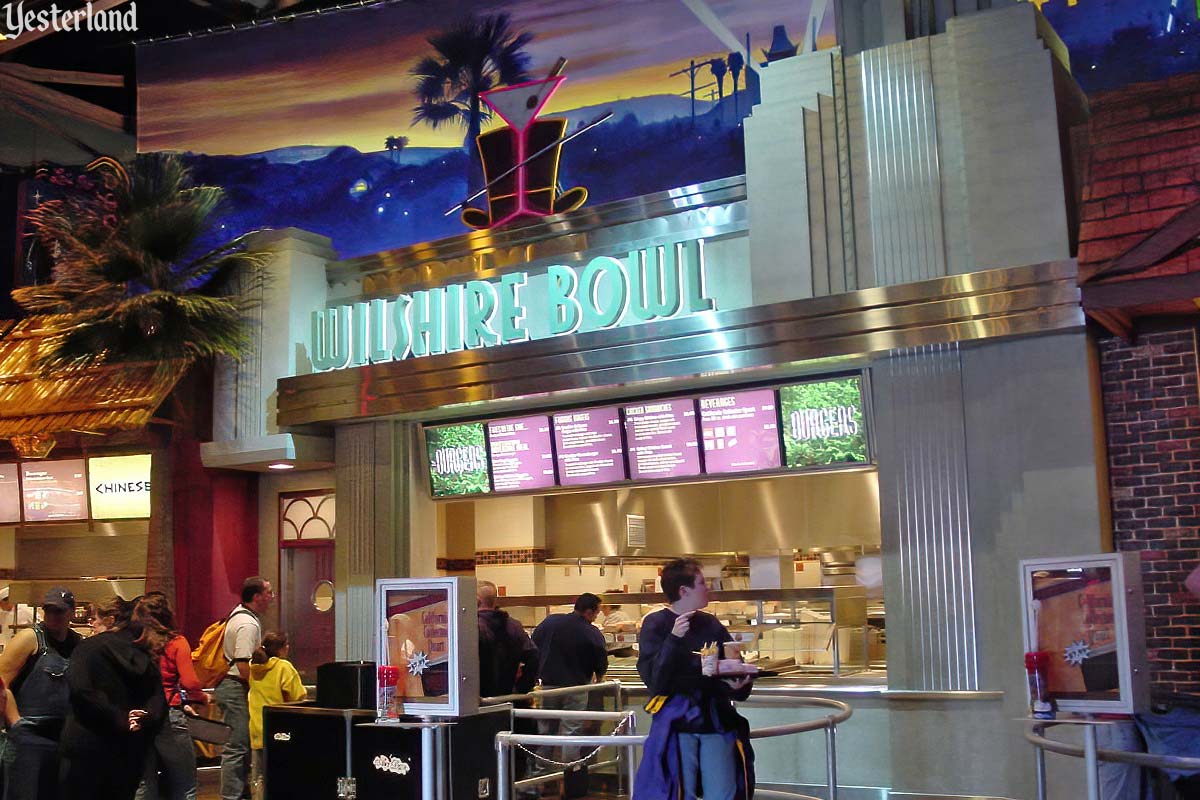
Photo by Allen Huffman, 2001 Wilshire Bowl, serving burgers |
|||
|
Your next choice is the Wilshire Bowl, specializing in burgers and chicken sandwiches. Try the cheddar & bacon burger for $6.79, complete with fries. For a chicken sandwich, take your pick of crispy or grilled; either way, it’s $6.49 including fries. The design of the Wilshire Bowl is based on the Wilshire Bowl nightclub—not a bowling alley, despite the name—which opened in the 1930s at 5655 Wilshire Boulevard on Los Angeles’s Miracle Mile. Jack Benny often mentioned the Wilshire Bowl during his popular radio show. In 1943, boxing champion and actor Max “Slapsie Maxie” Rosenbloom (1904-1976) turned the striking art deco building into Slapsy Maxie’s, one of the top nightclubs in the city. |
|||
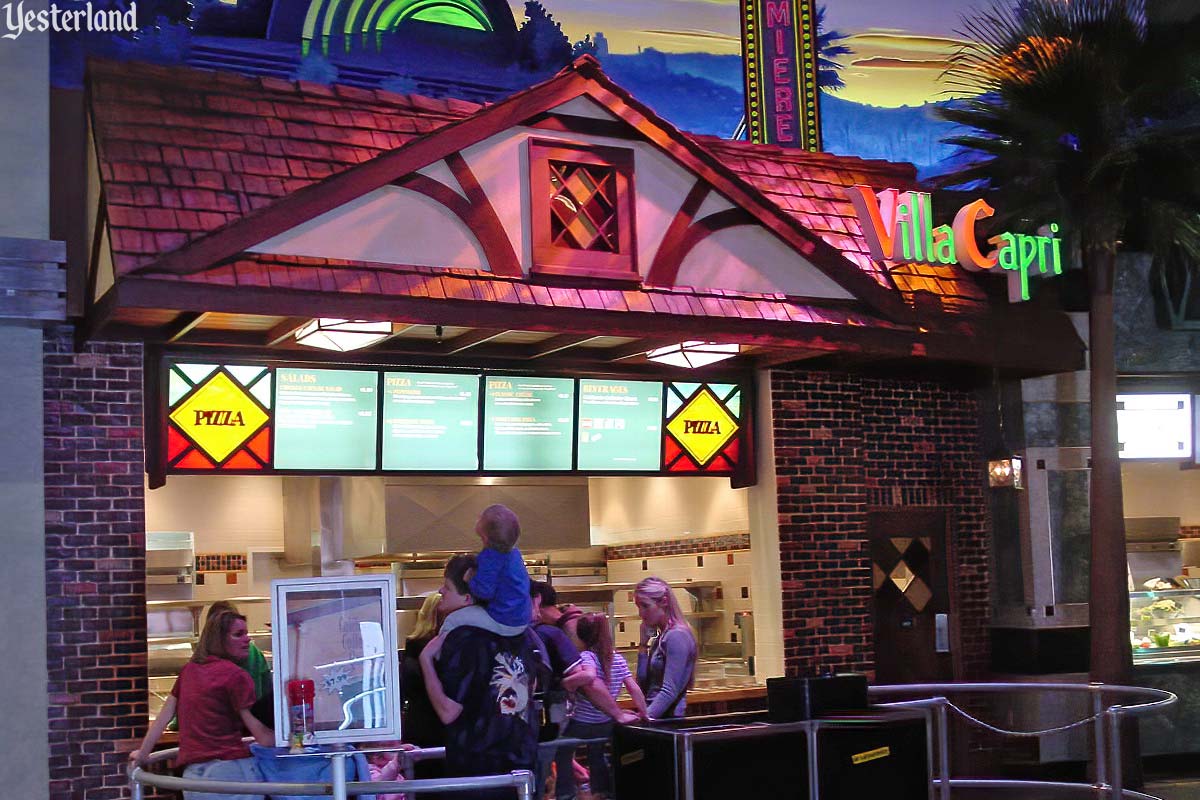
Photo by Allen Huffman, 2001 Villa Capri, serving pizza |
|||
|
How about a gourmet pizza? Perhaps with a salad? Choose from four-cheese, pepperoni, vegetable, or BBQ chicken pizza. The prices range from $5.19 to $5.69 for an individual pizza. Add a side caesar salad for $3.29. Or make a meal of a grilled chicken Caesar salad for $8.29 or an antipasto salad $7.99. The actual Villa Capri restaurant opened in 1957 at 6735 Yucca Street in Hollywood, just around the corner from the first Don the Beachcomber. Co-owned by Frank Sinatra, the restaurant featured Italian specialties. After a quarter century of catering to celebrities, Villa Capri closed in 1982. The building that housed the Villa Capri was torn down in August 2005, despite efforts by preservationists. |
|||
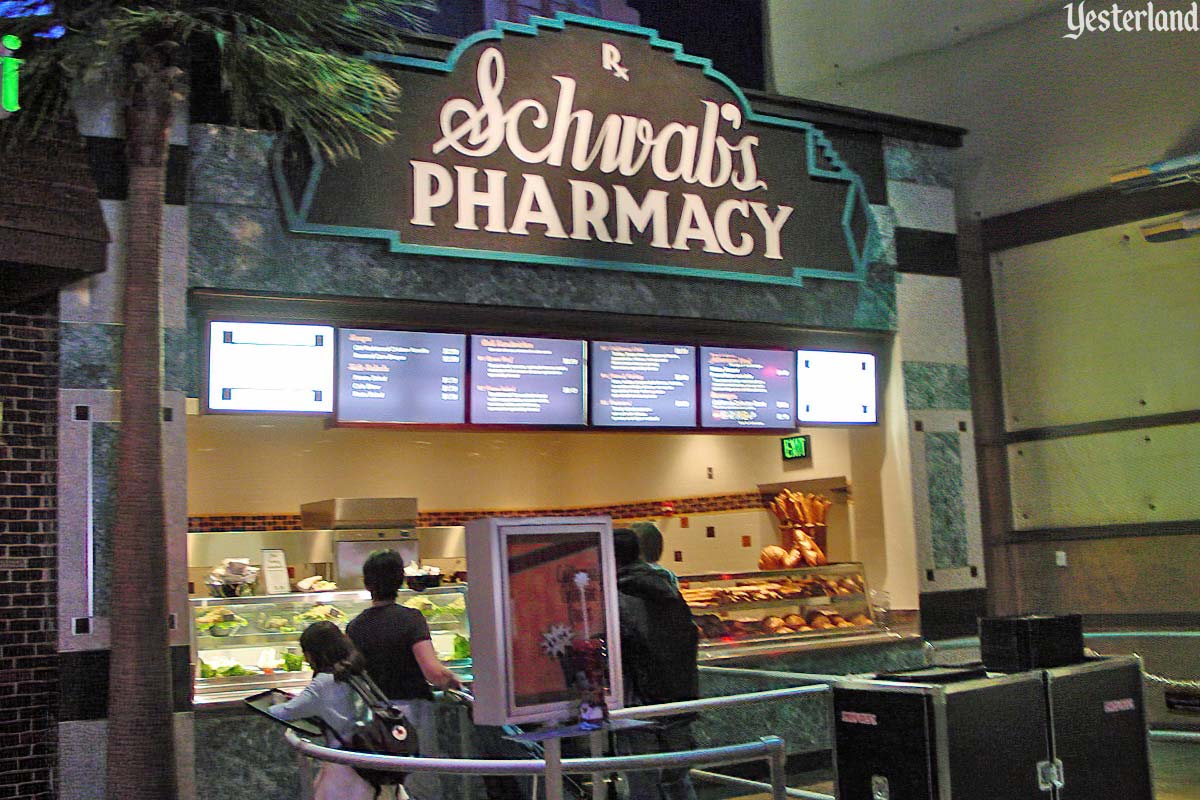
Photo by Allen Huffman, 2001 Schwab’s Pharmacy, serving sandwiches |
|||
|
There’s one more counter. Despite the name, you’ll find sandwich makers, not pharmacists. Schwab’s Pharmacy serves soups, traditional deli sandwiches, and side salads. Start with chicken noodle soup or corn bisque for $3.99. Choose one of the traditional sandwiches: roast beef, tuna salad, California club, ham & turkey, or pastrami. Sandwiches are $7.49 or $8.99. Add a side of potato salad, cole slaw, cucumber salad, or pasta salad for $1.79. The real Schwab’s at 8024 Sunset Boulevard in Hollywood is most famous for the legend that Lana Turner was discovered sipping a Coke at Schwab’s and was quickly signed to a movie contract. It doesn’t matter that Hollywood High School teenager Lana Turner was actually discovered at Hollywood’s Top Hat Cafe. Schwab’s remains the drug store of legend. However, movie moguls and movie stars really did sit at the counter of the conveniently located Schwab’s Drug Store for coffee, light meals, and ice cream. Schwab’s closed in 1983 and the building was torn down in 1988. |
|||
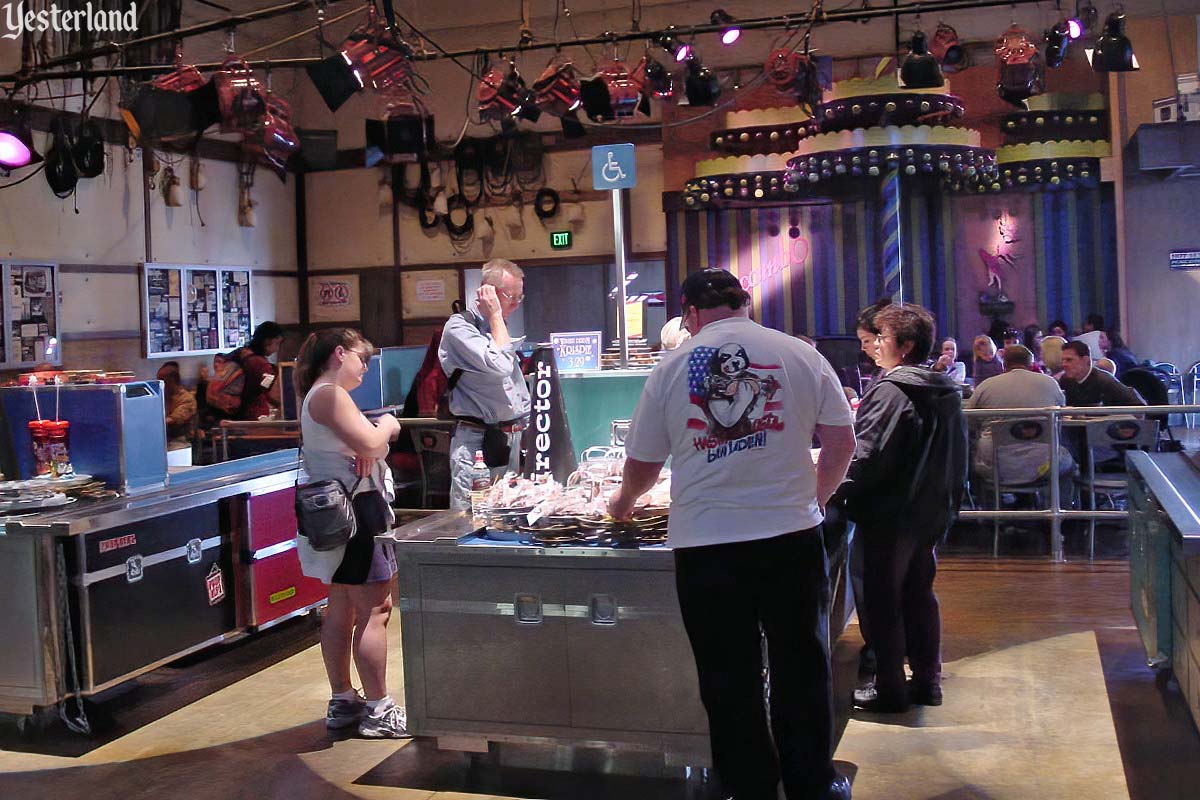
Photo by Allen Huffman, 2001 Central checkout registers |
|||
|
Regardless of which food counter you choose, you pay at one of the central checkout registers. |
|||
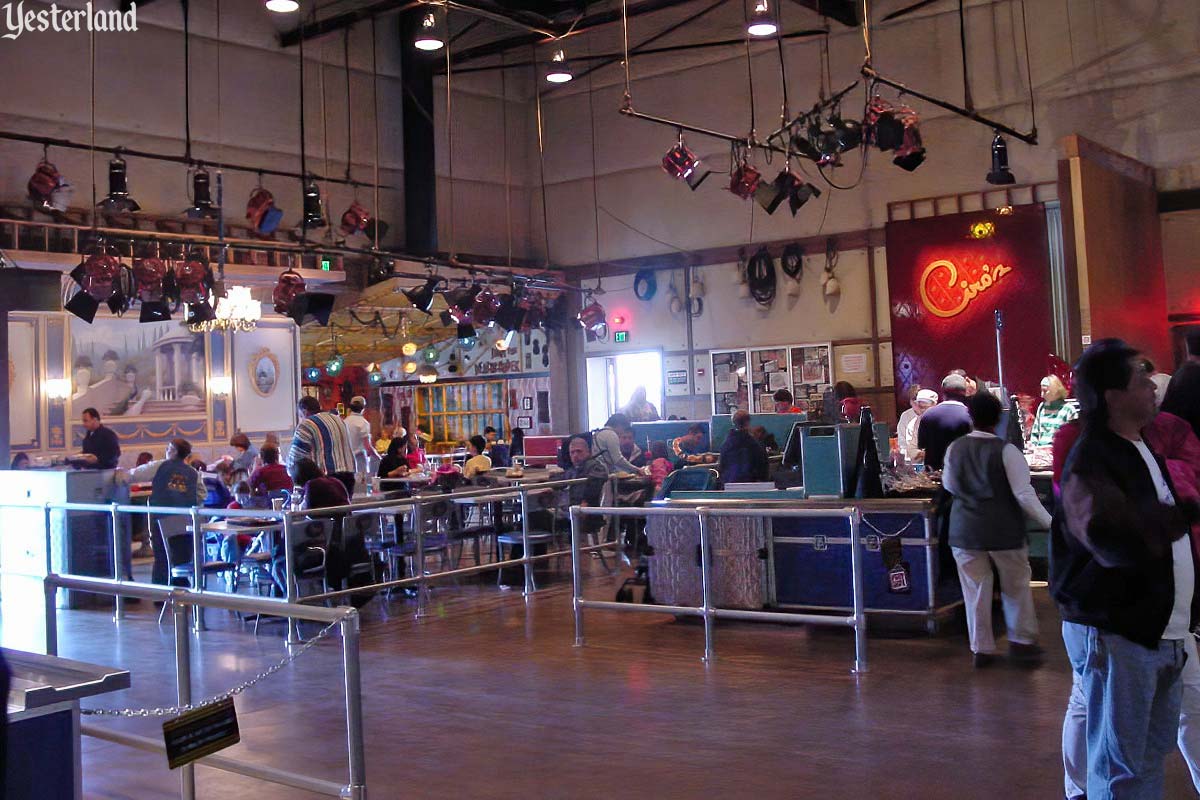
Photo by Allen Huffman, 2001 Soundstage rigged with overhead movie lights |
|||
|
Now that you’ve paid, take your Chinese food, burger, pizza, or sandwich to a dining area that reflects the same bygone era as the four food counters. There’s never a problem finding a table at Hollywood & Dine. |
|||
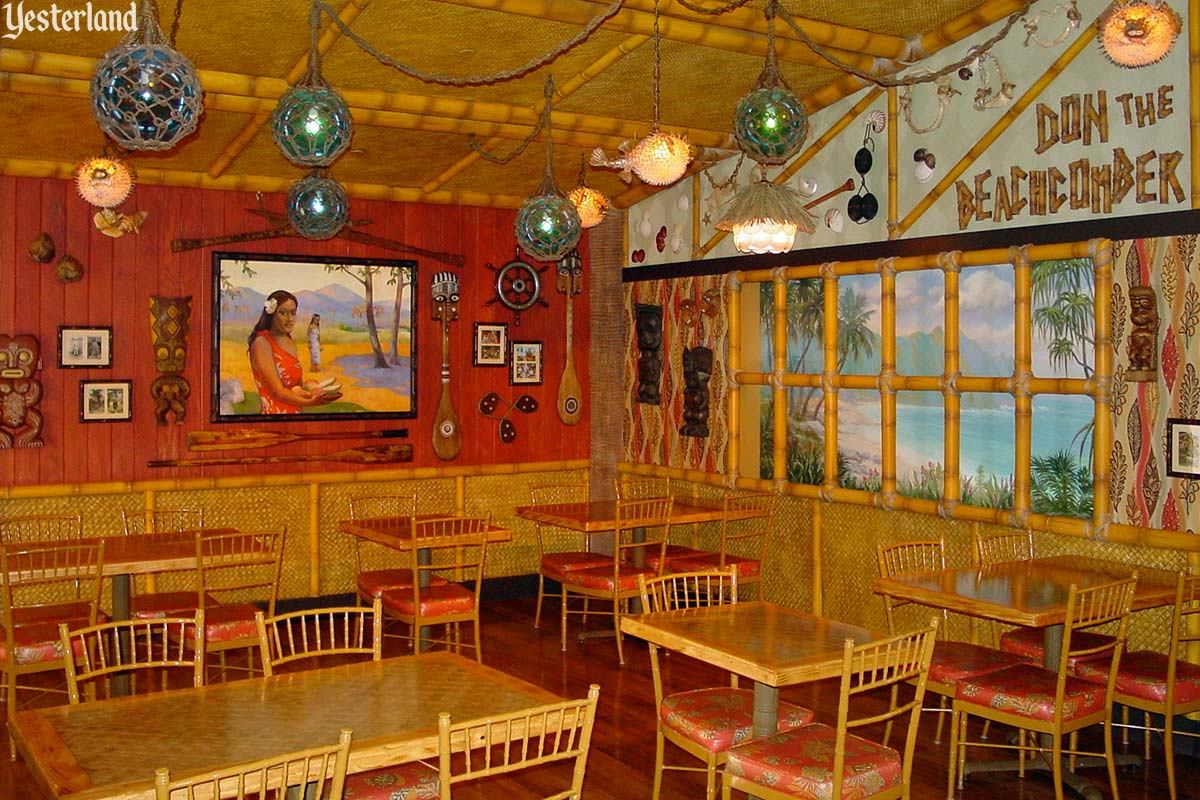
Photo by Tony “WisebearAZ” Moore, 2001 Don the Beachcomber dining area |
|||
|
Don the Beachcomber is the only historical eatery represented by both a food counter and a dining area. Enjoy your meal in a classic tiki lounge. Alas, there are no tropical rum drinks at this version. |
|||
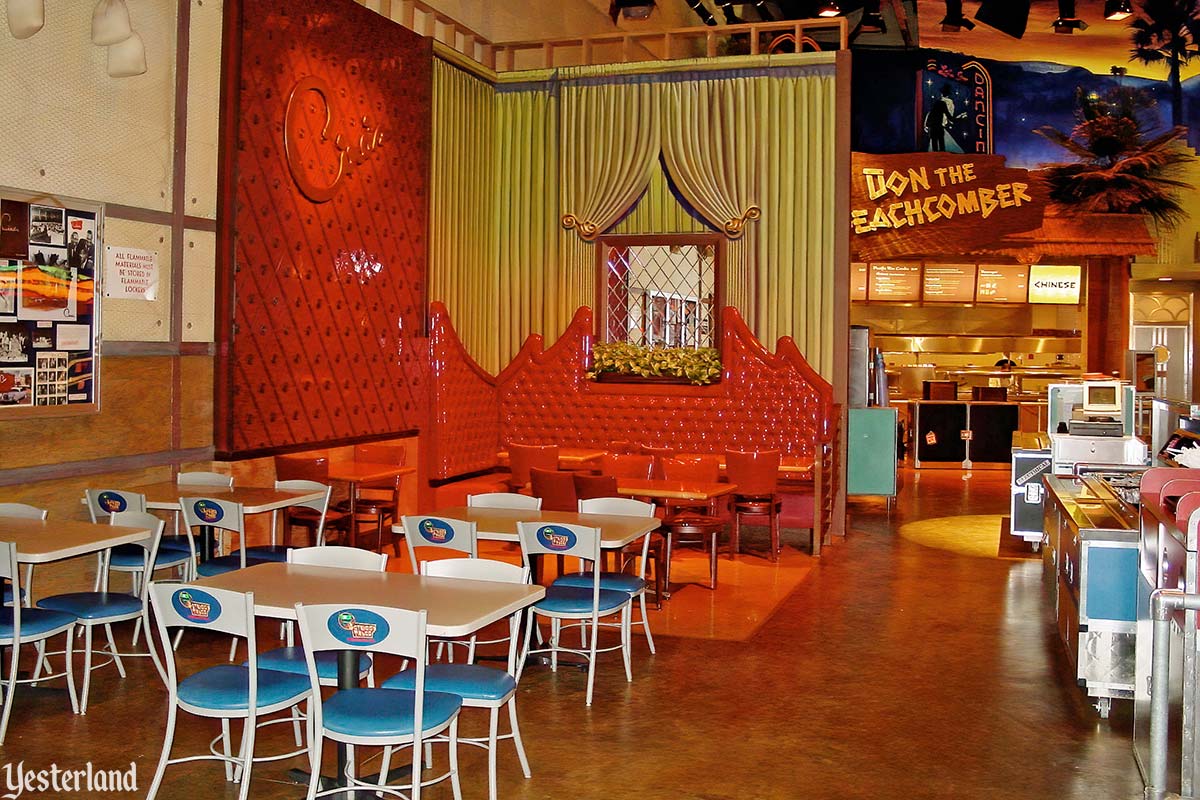
Photo by Tony “WisebearAZ” Moore, 2001 Ciro’s dining area |
|||
|
In the 1940s and 50s, Ciro’s nightclub on the Sunset Strip was arguably the top place for the Hollywood elite to dine, drink, and dance. Take your tray to the corner of Hollywood & Dine that reflects the tufted red leather decor of the long-gone original. You probably won’t see any celebrities at this Ciro’s. |
|||
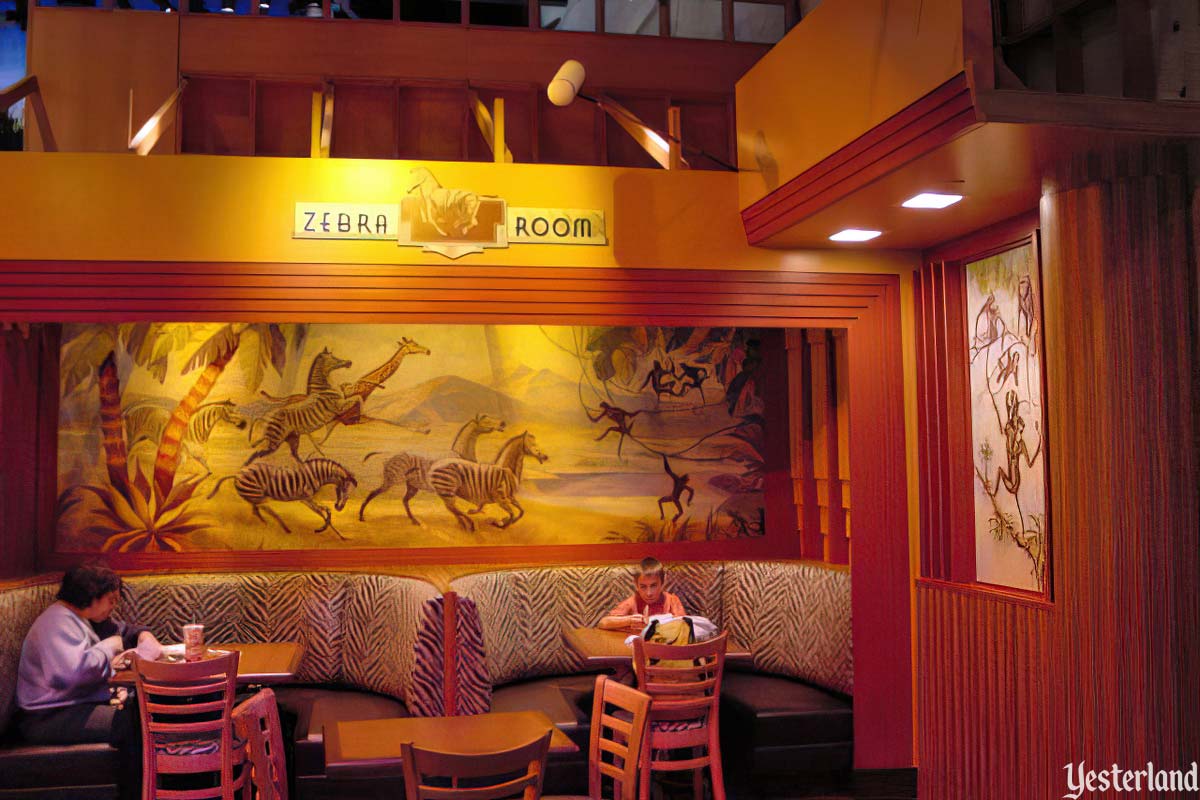
Photo by Allen Huffman, 2001 Zebra Room dining area |
|||
|
The Zebra Room was the glamorous nightclub at the luxurious Town House Hotel, across from Lafayette Park in Los Angeles. The hotel closed permanently in 1993 and was threatened with demolition. The stately building reopened as low-cost housing in December 2001, but the Zebra Room is long-gone. |
|||
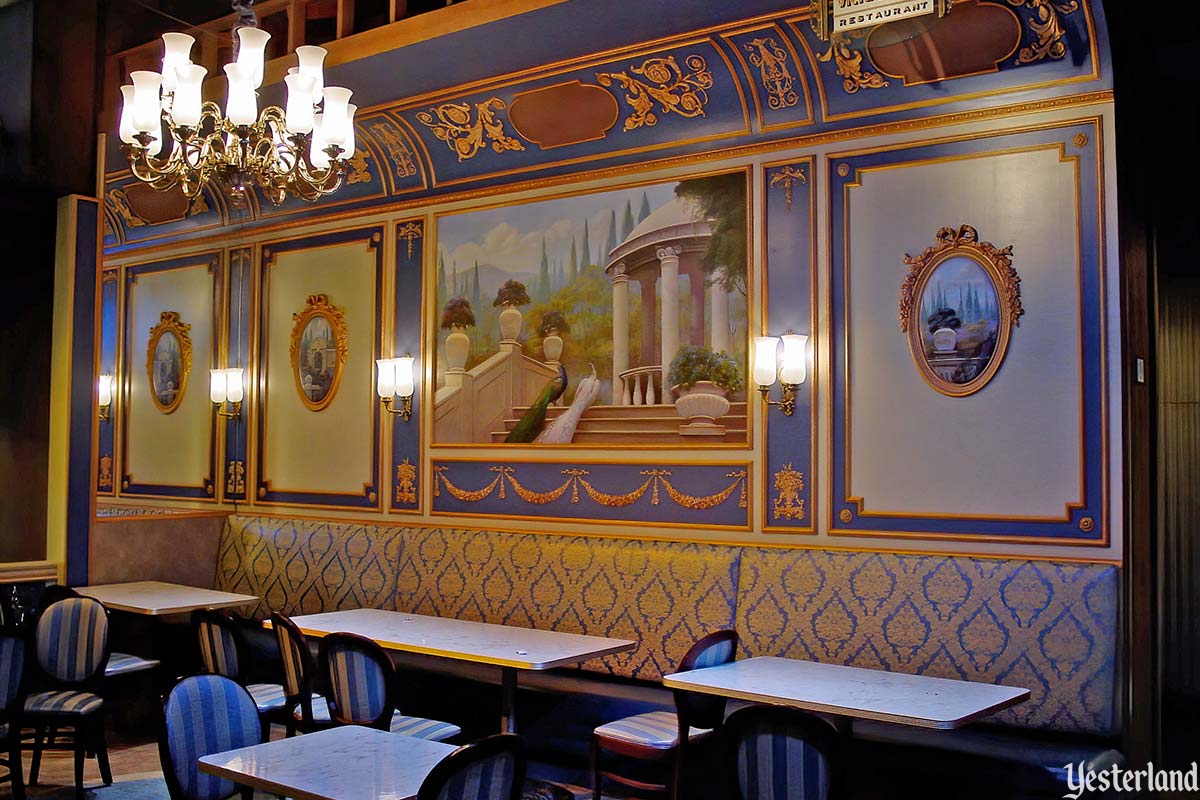
Photo by Tony “WisebearAZ” Moore, 2001 Victor Hugo Restaurant dining area |
|||
|
The opulent Victor Hugo Restaurant moved from Los Angeles to a similarly opulent, but larger, Beverly Hills location in 1934. The dining destination was fit for French royalty. Perhaps you’ll want to bring your own white tablecloth to the Hollywood & Dine version. If it’s a nice day, you may want to take your tray outside. |
|||
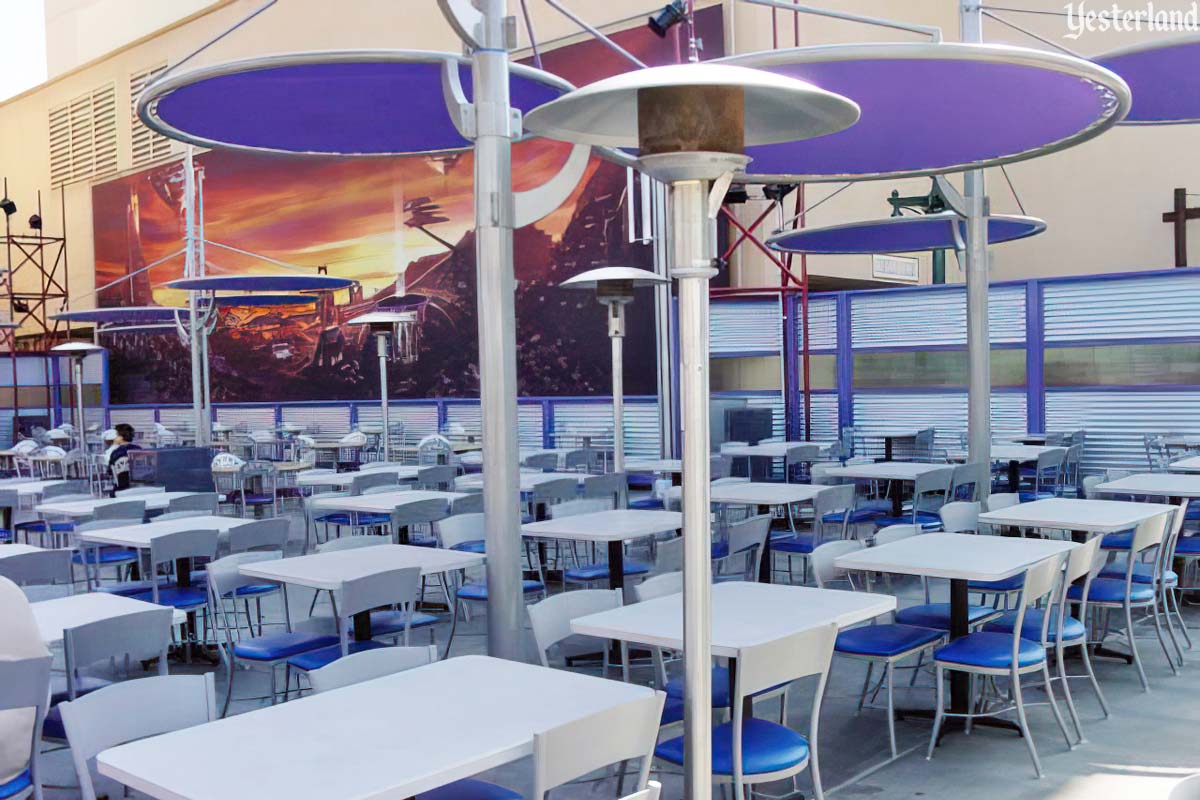
Photo by Allen Huffman, 2001 Plenty of seating outside |
|||
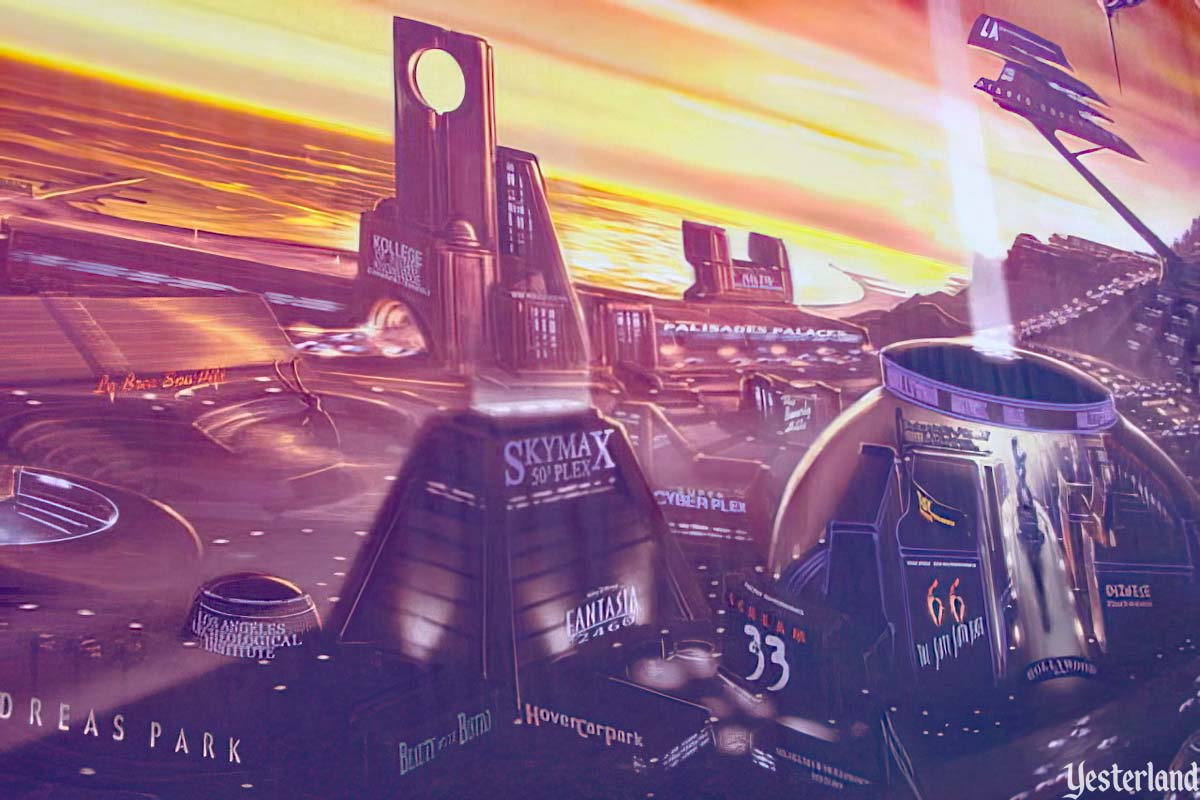
Photo by Allen Huffman, 2001 A small section of “Hollywood of the Future” |
|||
|
The inside of Hollywood & Dine represented the Hollywood of the past. The outside features a mural, “Hollywood of the Future,” against the building wall. Fantasia 2460 is playing at the Skyplex. |
|||
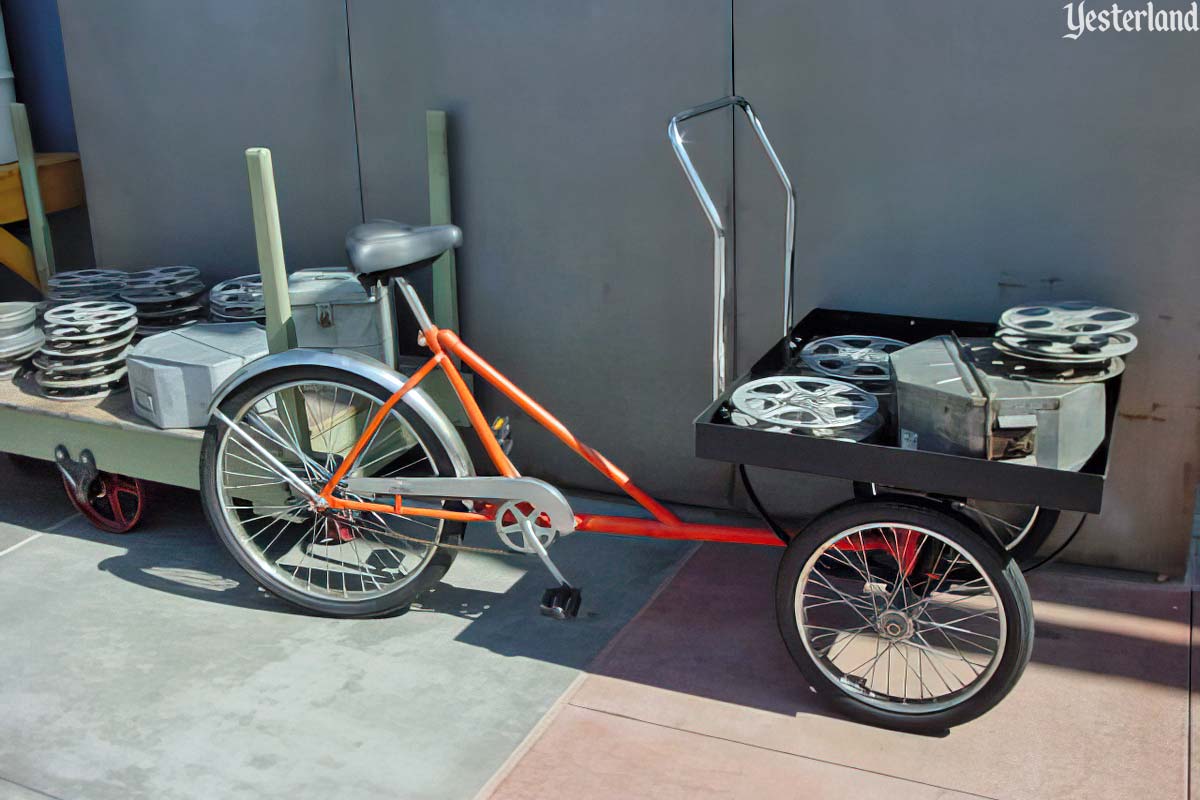
Photo by Allen Huffman, 2001 Utility bicycle, apparently abandoned by a studio runner |
|||
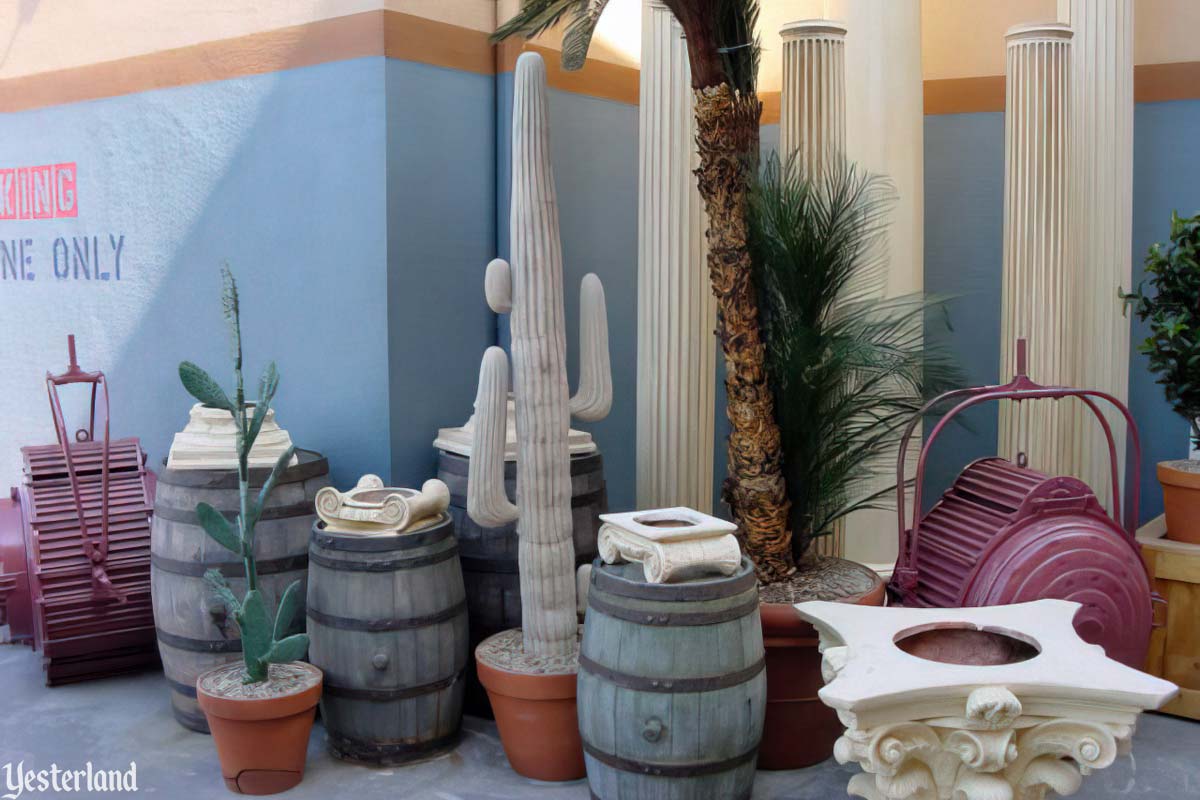
Photo by Allen Huffman, 2001 Movie props lined up outside |
|||
|
The movie studio theme continues outside of Hollywood & Dine, although the theme of legendary restaurants is only inside. Outside, it’s more like random movie junk. |
|||
|
|
|||
|
When Disney’s California Adventure opened to the public on February 8, 2001, the Hollywood & Dine food court was ready to serve the masses. The masses never showed up. |
|||
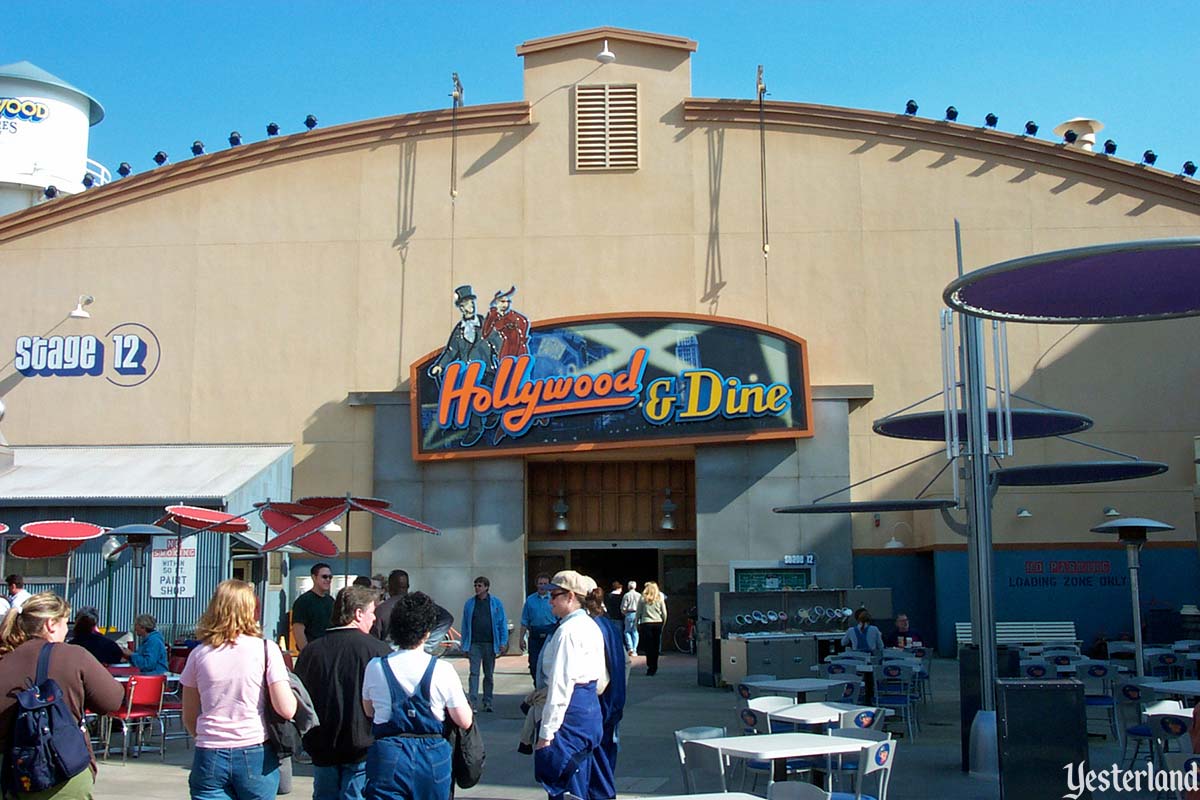
Photo by Tony “WisebearAZ” Moore, 2001 Hollywood & Dine, as it looked in 2001 |
|||
|
Disney’s California Adventure had too many places to eat and too few guests. Hollywood & Dine was stuck in a dead corner of the park beyond the poorly received Superstar Limo attraction. In 2001, the $8.49 tuna salad sandwiches and $4.29 vegetarian egg rolls didn’t do anything to generate “you gotta go there” word-of-mouth. Hollywood & Dine didn’t take guests back to the Golden Age of Hollywood. The official backstory was that the Between Takes Catering Company was serving “great tastes of Hollywood’s best bygone restaurants” at a contemporary movie studio, so the caterer themed a food court to reflect these restaurants. But it was also a soundstage with lights, props, and sets. Perhaps a production company was filming a movie about the Golden Age of Hollywood. The “sets” didn’t look like anything that would be believable in a real movie. Hollywood & Dine wasn’t convincing on either level. |
|||
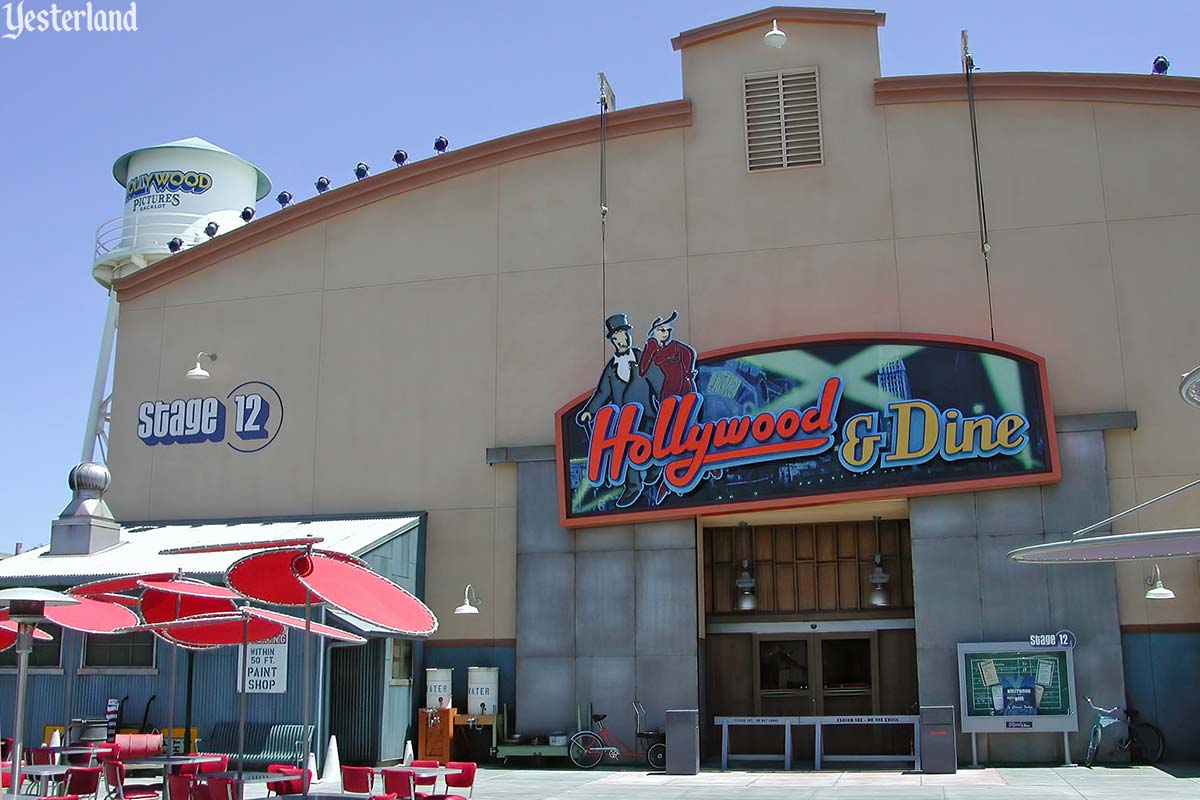
Photo by Werner Weiss, 2002 Hollywood & Dine, locked and blocked |
|||
|
Hollywood & Dine was a victim of some of earliest cost cuts at Disney’s California Adventure during the park’s first year of operation. Guests found locked doors behind gray barriers. The temporary closing became permanent, although the sign remained in the front of the building into 2005. |
|||
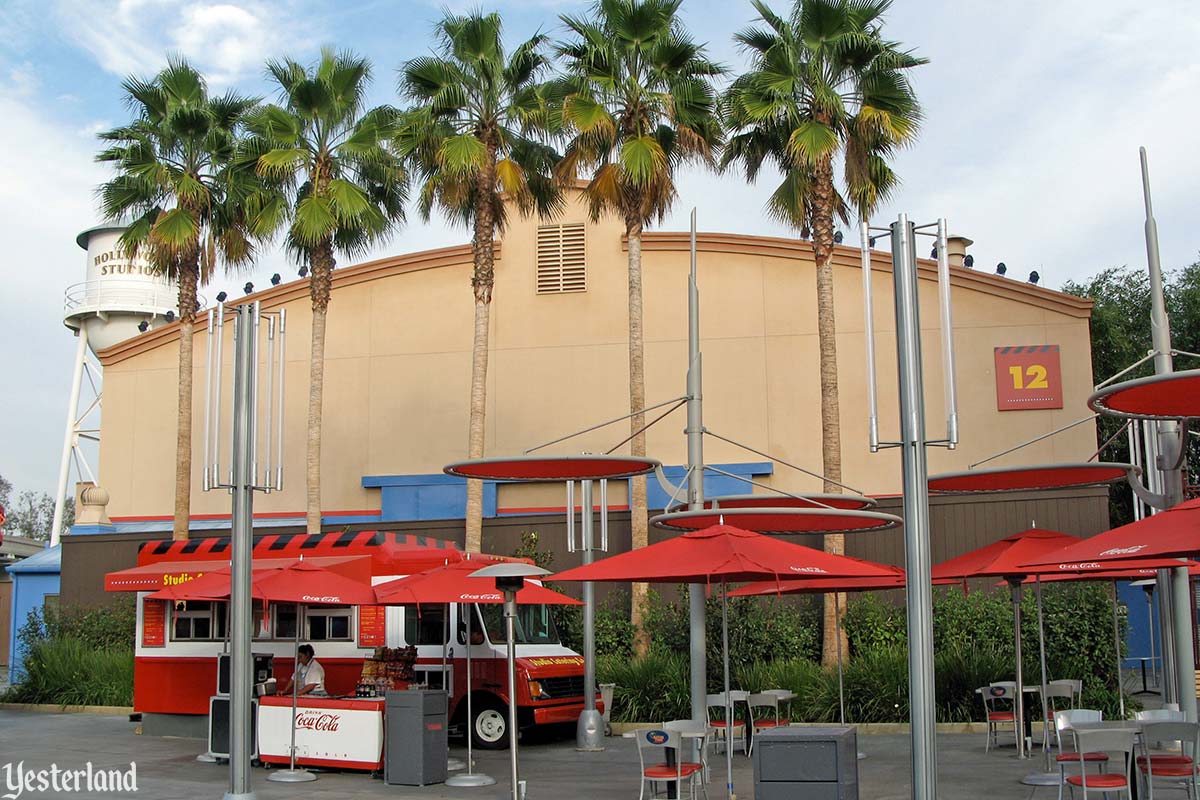
Photo by Werner Weiss, 2007 Former Hollywood & Dine after “placemaking” |
|||
|
In late 2005, when the Hollywood Studios Backlot was fixed up for the opening of Monsters, Inc.: Mike & Sulley to the Rescue!, Disney’s California Adventure finally made Hollywood & Dine look like a studio building in the background, instead of a shuttered restaurant. After it closed, the former public food court in Soundstage 12 became a space for private functions. If you wanted dinner at Hollywood & Dine, you could invite hundreds of your friends, co-workers, or customers. According to the Disneyland Meetings website at the time, “Your custom event may include our theme dining location, Hollywood & Dine.” In early 2010, Soundstage 12 served as an Annual Pass Processing Center. |
|||
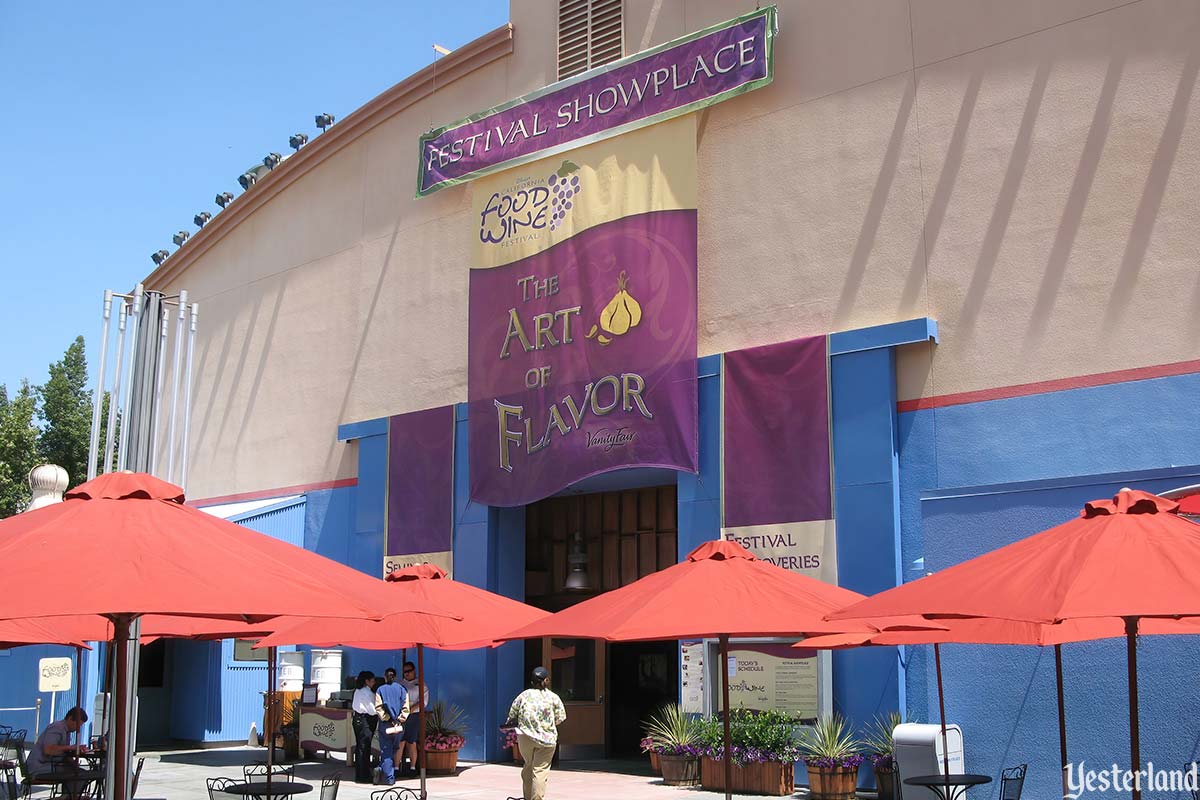
Photo by Werner Weiss, 2010 As the Festival Showplace during the 2010 California Food & Wine Festival |
|||
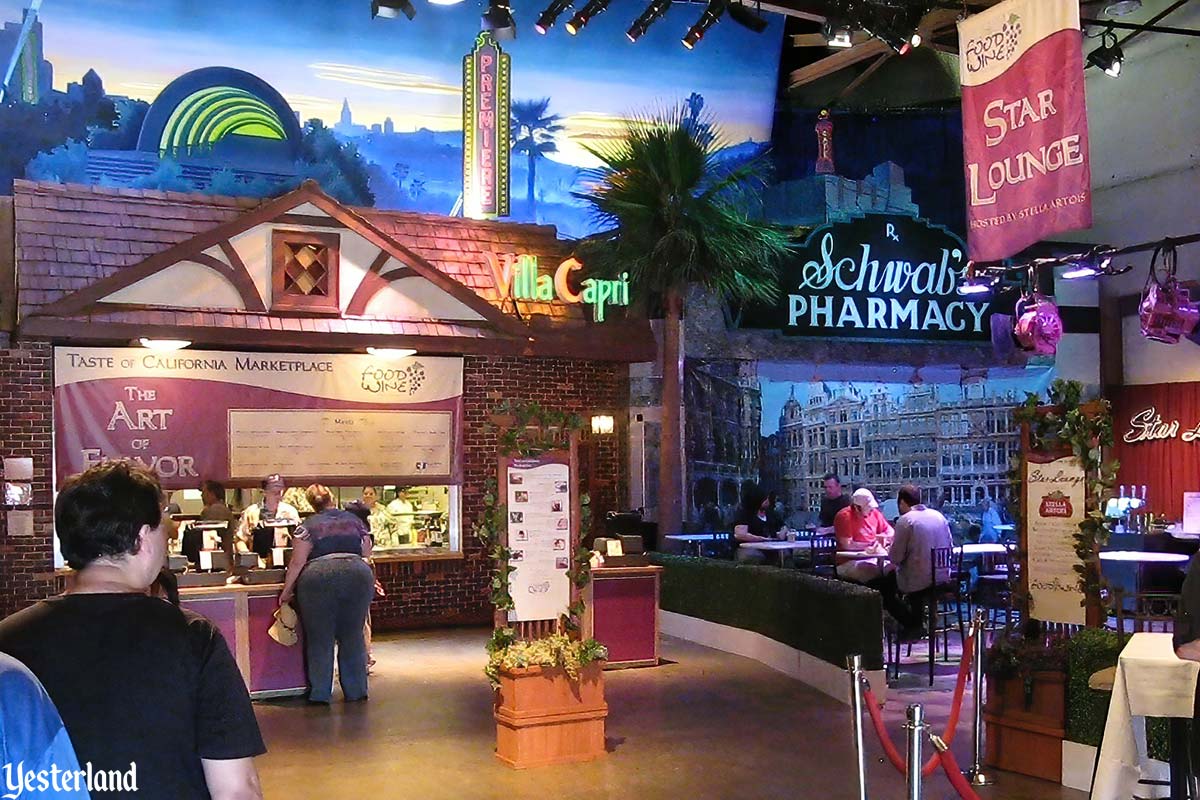
Photo by Werner Weiss, 2010 Remnants of Hollywood & Dine still in place in 2010 |
|||
|
During the 5th annual Disney’s California Food and Wine Festival (April 16 to May 31, 2010), Soundstage 12 served as the Festival Showplace, with wine tasting sessions, a wine store, a food counter, and special events. The building also opened to the public for arcade games as Flynn’s Arcade during ElecTRONica (2010-2012) and as Mad Arcade during the original run of Mad T Party (2012-2014)—with the Hollywood & Dine decor no longer visible. |
|||
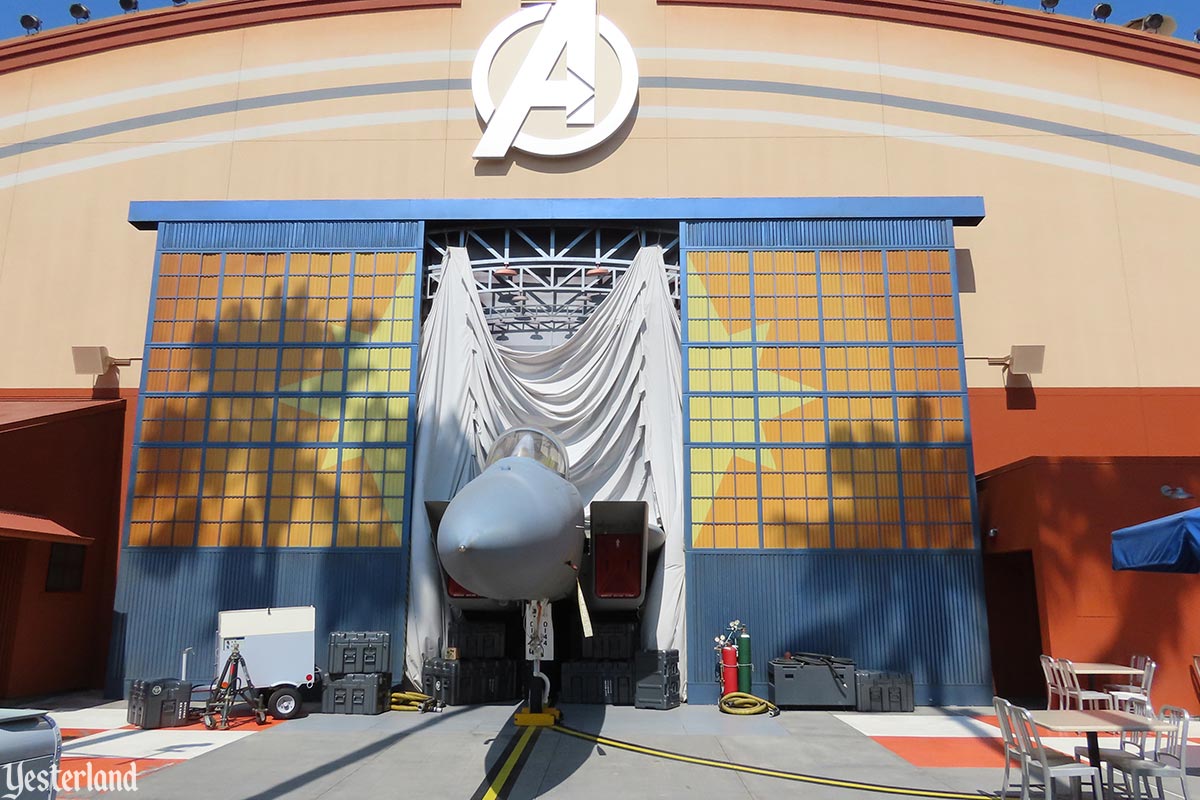
Photo by Chris Bales, 2021 Soundstage 12 dressed up as an aircraft hangar for Captain Marvel meet and greets |
|||
|
A soundstage and an aircraft hangar have similar architectural characteristics. That came in handy in 2019 when Disney California Adventure wanted an impressive setting for meet and greets promoting the Marvel movie Captain Marvel. When the meet and greets ended, the faux hangar remained. Soundstage 12 is still part of the park, ready to be opened to the public when the need arises. The studio backlot at Hollywood Land is overdue for a major renovation. Maybe the park could use use a new food court, now that the masses are actually showing up. |
|||
|
|
Click here to post comments at MiceChat about this article.
© 2023 Werner Weiss — Disclaimers, Copyright, and Trademarks Updated June 23, 2023 |
||
